I'm doing a bath remodel and have read many pages of the forums on the topic. Please pardon the length of this post, but this is my first remodel, and I want to do it right.
I understand that I must do one of two methods for water/vapor barrier in combined tub/shower (not enclosed steam shower):
- 6 mil poly sheet attached to studs, then hardibacker, then tape + mortar seams + screws, then thinset + tile, OR
2) hardibacker attached directly to studs, then tape and mortar seams + screws, then a topical water/vapor barrier (such as redgard,hydoban, or preferably Kerdi), then thinset, then tile.
Due to budget constraints, I intend to use the first choice using poly.
I generally understand that the poly should be run from the ceiling down and overlap the inside of the tub flange so that any moisture that collects on the inside surface of the poly can run back into the tub instead of behind it. I plan on attaching furring strips to the studs if needed so that the hardiboard can extend over the tub flange instead of simply butting up to it.
If the purpose of the poly is to prevent water/vapor from getting through to the studs, then I'm trying to figure out what should be done to make sure I have properly installed the barrier.
1. Is there a special kind of non-rusting staple that should be used?
2. Can I simply staple the poly across the top and then let the board screws secure the rest of the poly or should the whole sheet be stapled? If staples are recommended, shouldn't each staple be sealed to prevent water/vapor flow?
3. Once the hardibacker is in place, should the screws also be sealed? If not, why not? (The Hardibacker instructions only say to tape and seal the seams.) If the screws should be sealed, is thinset enough, or use some other type of sealant?
4. Should the poly be sealed across the tops and sides with some sort of sealant? If not, why not (wouldn�t the water/steam simply go around these unsealed ends?
5. For the area where the poly overlaps the tub flange, again I assume a sealant should be applied between the tub flange and the back surface of the poly.
6. What about the plumbing pipes? Will a good bead of sealant all around be enough, or is there some technique for this area?
7. EXACTLY what type of sealant should I use? I've seen references to using asphalt tar, silicone caulk, acoustic sealant, Kerdifix�.? Can acoustic sealant be bought at HomeDepot/Lowes/Menards?
8. Should you use the same type of sealant on the poly/tub flange area as you would on the other edges of the poly?
9. Here is my major puzzlement: I keep reading that a bead of caulk should be run between the installed poly and the cement board at the bottom of the tub flange. Wouldn't this trap any moisture between the board and the poly?? How can the water run back into the tub if there is a line of caulk blocking the path? On the other hand, if it is left unsealed, how to you prevent water from the shower area getting on the end of the board and wicking up the board? (Or is it irrelevant that the board gets wet because of the poly barrier?)
10. What about the ceiling � My plan was to leave the existing drywall/greenboard up there (I haven't started demo yet, so I don't know exactly what it is.) Does this need to come down to studs + have poly barrier there also? If not, why not? Wouldn't steam simply absorb into the ceiling and go through to the studs?
11. As for the plastic itself, as long as it is 6 mil, does it matter what "kind" it is? Home Depot only had one type, and it just says "plastic" on the label, which no indication of if it is poly or not. Do I need to find something particular?
12. How far past the edge of the tub/tile area should the poly and hardiboard extend?
13. Should I use alkali-resistant tape and thinset at the seam where the hardiboard meets the existing drywall, or regular fiberglass tape and drywall compound?
Again, pleas forgive the length. Hopefully this can help someone else with the same questions! THANKS!

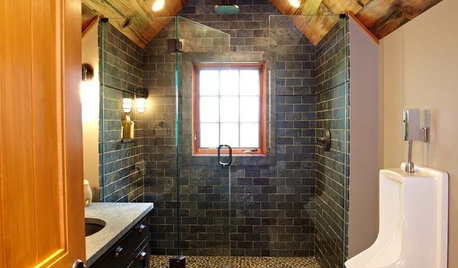

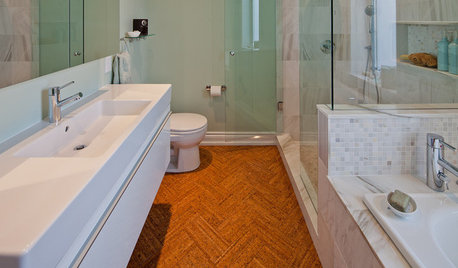

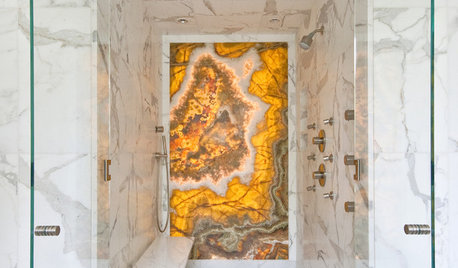

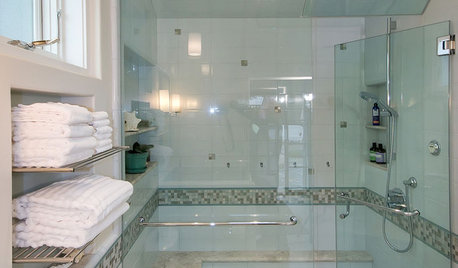
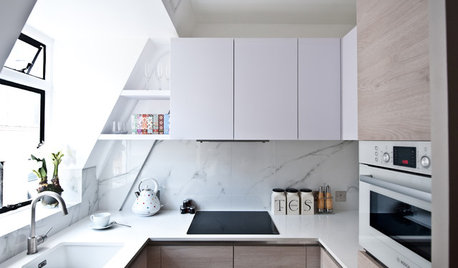






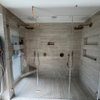
MongoCT
bobafettucciniOriginal Author
Related Discussions
vapor barrier needed in less wet part of shower?
Q
mongo, Wediboard question re barrier behind
Q
Use poly vapor barrier btwn cement brd and insulation?
Q
Blown In Cellulose: Do I need a vapor barrier or not?
Q
bobafettucciniOriginal Author
jdhalfalive_hotmail_com